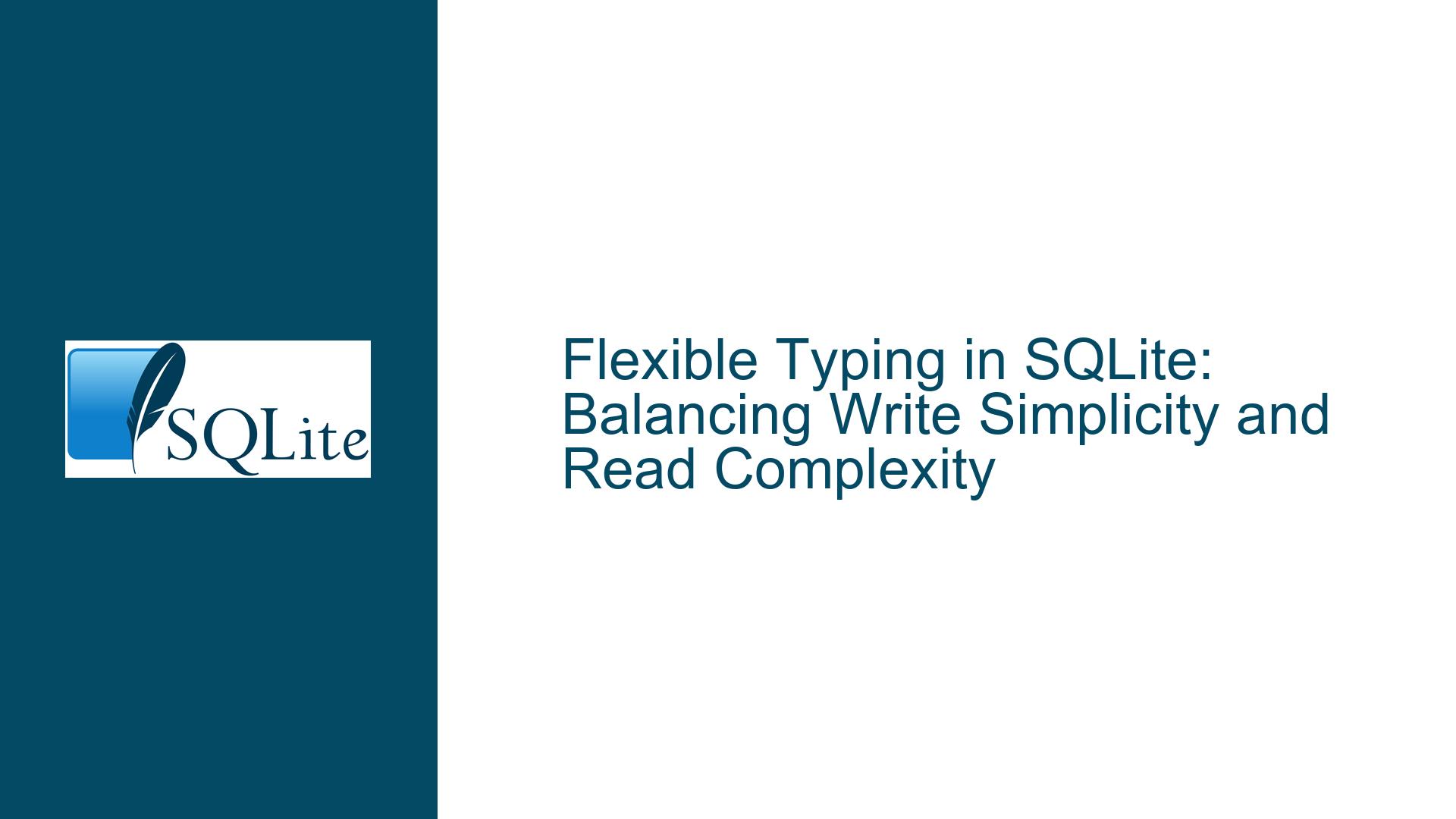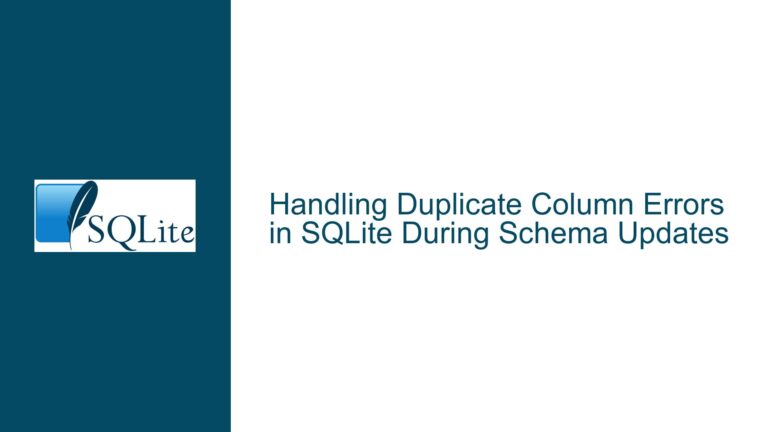Flexible Typing in SQLite: Balancing Write Simplicity and Read Complexity
The Trade-off Between Write Simplicity and Read Complexity in Flexible Typing
Flexible typing in SQLite is a double-edged sword. On one hand, it simplifies the process of writing data by allowing developers to insert values without strict type enforcement. This flexibility reduces the amount of application code required for writes, as developers do not need to explicitly define or enforce data types at the database level. However, this same flexibility introduces complexity when reading data. Since SQLite does not enforce strict typing by default, the responsibility of handling varying data types falls on the application layer during read operations. This can lead to increased complexity in the application code, as developers must account for potential type mismatches, conversions, and validations when retrieving data.
The core issue here is the trade-off between the simplicity of writing data and the complexity of reading it. While flexible typing reduces the overhead during data insertion, it shifts the burden to the read operations, where developers must implement additional logic to handle the variability in data types. This trade-off is particularly relevant in scenarios where the data source is not tightly controlled, or where multiple applications interact with the same database, each potentially introducing data in different formats.
The Role of STRICT Tables and Check Constraints in Mitigating Type Variability
One of the key mechanisms SQLite provides to address the challenges of flexible typing is the use of STRICT tables and check constraints. STRICT tables, introduced in SQLite 3.37.0, enforce strict typing at the table level, requiring that each column adheres to a specific data type. This feature allows developers to impose type restrictions similar to those found in inflexibly typed systems, thereby reducing the variability in data types that must be handled during read operations.
Check constraints offer another layer of control by allowing developers to enforce specific conditions on the data being inserted or updated. For example, a check constraint can be used to ensure that a column only contains values of a certain type, or that the values fall within a specified range. By incorporating typeof() calls within these constraints, developers can further refine the type enforcement, ensuring that only data of the expected type is stored in the database.
These mechanisms provide developers with the tools to balance the flexibility of SQLite’s typing system with the need for type consistency. By selectively applying STRICT tables and check constraints, developers can tailor the level of type enforcement to the specific requirements of their application, thereby mitigating the complexity introduced by flexible typing during read operations.
Strategies for Managing Type Variability in Application Code
While SQLite provides tools like STRICT tables and check constraints to manage type variability, there are also strategies that can be employed at the application level to handle the challenges of flexible typing. One such strategy is the use of data validation and transformation layers within the application code. These layers can be responsible for ensuring that data conforms to the expected types before it is inserted into the database, as well as for converting data to the appropriate types when it is retrieved.
Another approach is to implement type inference and conversion logic within the application. This involves analyzing the data being read from the database and dynamically converting it to the appropriate type based on the context in which it is used. While this approach can increase the complexity of the application code, it provides a high degree of flexibility in handling type variability, particularly in scenarios where the data types are not known in advance.
Additionally, developers can leverage the flexibility of SQLite’s typing system to their advantage by designing their applications to be more tolerant of type variability. This can involve using generic data structures that can accommodate different types, or implementing fallback mechanisms that handle unexpected types gracefully. By embracing the flexibility of SQLite’s typing system, developers can create applications that are more resilient to changes in data types and formats.
Best Practices for Balancing Flexibility and Consistency in SQLite Databases
To effectively balance the flexibility and consistency of data types in SQLite databases, developers should adopt a set of best practices that address both the write and read aspects of data handling. One such practice is to carefully consider the use of STRICT tables and check constraints during the database design phase. By defining strict typing rules and constraints upfront, developers can reduce the likelihood of type variability and ensure that the data stored in the database adheres to the expected formats.
Another best practice is to implement comprehensive data validation and transformation logic within the application code. This includes validating data before it is inserted into the database, as well as converting data to the appropriate types when it is retrieved. By centralizing this logic within the application, developers can ensure that type handling is consistent across all interactions with the database.
Furthermore, developers should consider the use of schema migration tools to manage changes in data types and formats over time. These tools can help automate the process of updating the database schema and application code to accommodate new data types, reducing the risk of type-related issues during data migration.
Finally, developers should adopt a proactive approach to monitoring and addressing type variability in their applications. This includes regularly reviewing the data stored in the database to identify any inconsistencies or unexpected types, as well as implementing logging and error handling mechanisms to detect and resolve type-related issues as they arise.
Conclusion: Embracing the Flexibility of SQLite While Managing Its Challenges
Flexible typing in SQLite offers a unique combination of simplicity and flexibility that can be both a strength and a challenge for developers. While it reduces the complexity of writing data by allowing for type variability, it also introduces challenges when reading data, as developers must account for potential type mismatches and conversions. By leveraging the tools and strategies available in SQLite, such as STRICT tables, check constraints, and application-level type handling, developers can effectively manage the trade-offs between write simplicity and read complexity.
Ultimately, the key to successfully working with SQLite’s flexible typing system lies in understanding its nuances and adopting a balanced approach that combines the flexibility of the database with the consistency required by the application. By following best practices and implementing robust type handling mechanisms, developers can harness the power of SQLite’s flexible typing system while minimizing its potential pitfalls.






